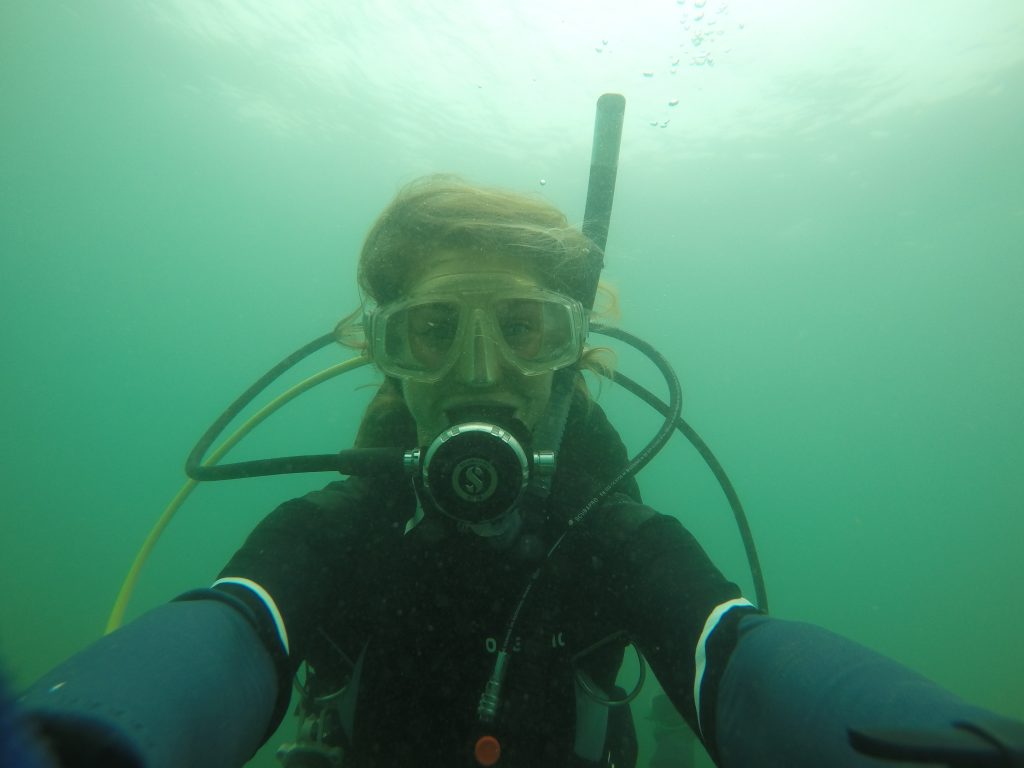It never once occurred to me that I would have the chance to be a crew chief, let alone be invited on a project to Costa Rica! The last few days flew by and it wasn’t long before we broke down the baseline and buoys and had our last day of diving. The last two days were devoted to drying and packing our gear and beginning the Cannon Site report. We also gave a presentation about our work to fishermen and other locals who were interested in the project. It was a wonderful opportunity to show our appreciation for their help and support. We gave the same presentation to a group of high school students so we could explain what it is a maritime archaeologist does. I enjoyed the school presentation immensely; I was happy to reach out to them and show them that their history and culture are important to study and protect.
Travel back to the good ole’ US of A meant we had to get up at 4am on Wednesday and pack into a tour bus for the four hour ride through the mountains to San José. What was supposed to be a four-hour ride actually took six hours on account of the landslides blocking one lane on the mountain and general San José traffic. Some of us were worried we would miss our flight but it was delayed (probably for the best). After that, we had to lug our bags to the airport and go through all the lovely checks. We arrived in the US late Wednesday night (some of us dealing with delayed connections) and were unpacked and ready to get back to work by Thursday afternoon.
The first day back, we met in the afternoon to unpack the gear and put it in its rightful place in Eller and the VOA. We also began to add in the reef line on the Brick Site map and finished up the Cannon Site. The students received their report sections and will be working on them for the next few days, both at home and at Eller. Photologs had to be updated, data had to be compiled and formatted for reports, and students had to meet to discuss interpretations and future recommendations of the sites. June 22 marked the last day of Summer Session and we certainly had a lot of work to do in the five days after we returned. We kept on schedule and got everything finished in time, which goes to show how important it is to work together as a team.
Overall, the project went amazingly well. We collected heaps of data and even located a brick site close to the shoreline in Cahuita National Park. We accomplished what we initially set out to do and built lasting relationships with the locals. We were successful in reaching out to them to help them research their local history and get it all down on paper (and on a blog). Another outcome of this project includes research material for articles and topics for presentation at the annual Society for Historical Archaeology conference.
My favorite part about the project was working with and befriending the local fishermen. They were a valuable part of the project; without them, we would not have been able to get to the sites or learn about the history and culture of the area. I am happy to call them my friends and I know they were glad to have us here to research their history. We made them feel special and important because we wanted to hear the stories of their lives. The shipwrecks we studied are a part of those stories and I am thankful for the opportunity to work on a unique project such as this.
Thanks to the students who worked hard during this project and thank you to the professors and staff for putting on such a wonderful project (and inviting me in the first place!).
-Melissa
